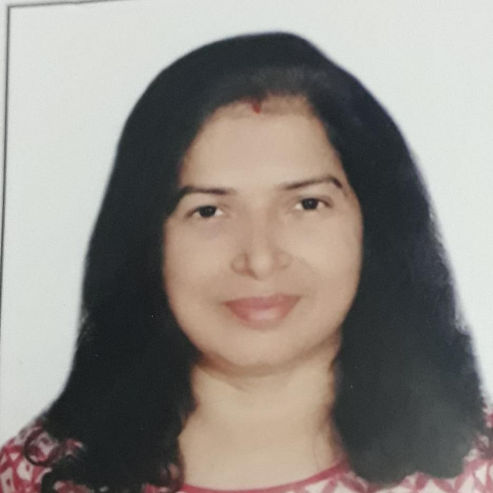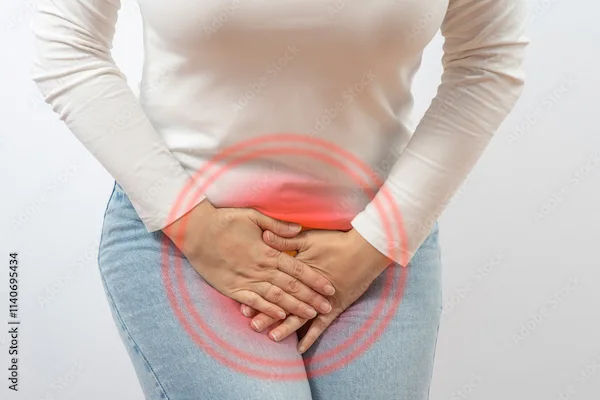Fibrocystic Breast Pain After Hysterectomy
Experiencing fibrocystic breast pain after hysterectomy? Understand the hormonal links, potential causes, and how to manage discomfort

Written by Dr. J T Hema Pratima
Reviewed by Dr. D Bhanu Prakash MBBS, AFIH, Advanced certificate in critical care medicine, Fellowship in critical care medicine
Last updated on 24th Sep, 2025

If you’ve had a hysterectomy (surgery to remove the uterus) and are now experiencing breast pain or lumpiness, you may be dealing with fibrocystic breast changes. This condition is common and usually harmless, but it can be uncomfortable and worrisome. Let’s break down what it is, why it happens, and how you can manage it effectively.
What Is Fibrocystic Breast Pain?
Fibrocystic breast changes refer to lumpy, tender, or swollen breasts that often fluctuate with hormonal shifts. While these changes are benign (noncancerous), they can cause discomfort, especially before menstruation. After a hysterectomy, some women notice these symptoms even if they no longer have periods. This happens because hormonal fluctuations can still occur, especially if the ovaries were not removed.
Why Does It Happen After a Hysterectomy?
The following are the reasons:
Hormonal Imbalance – Even after a hysterectomy, your ovaries (if retained) continue producing hormones like estrogen and progesterone. If these hormones fluctuate, they can trigger fibrocystic changes.
Surgical Impact on Hormones – Sometimes, removing the uterus affects overall hormonal balance, leading to breast tenderness.
Post-Surgical Stress – Surgery can temporarily disrupt your body’s natural rhythms, including hormone regulation.
Symptoms to Watch For
The following symptoms are to watch for:
Breast tenderness or pain (often cyclical but can be constant)
Lumpiness (movable, fluidfilled cysts)
Swelling or heaviness in the breasts
Nipple discomfort
If you notice any new, hard, or immovable lumps, persistent pain, or nipple discharge (especially bloody), consult a doctor to rule out other concerns.
Consult Top Specialists for Gynecologist
How to Manage Fibrocystic Breast Pain
The list are the ways to manage:
1. Lifestyle Adjustments
Wear a supportive bra – A wellfitted bra reduces movement and discomfort.
Reduce caffeine – Some women find that cutting back on coffee, tea, and chocolate helps.
Limit salt intake – Excess salt can worsen fluid retention and breast swelling.
Stay hydrated – Drinking enough water helps flush out excess hormones.
2. Dietary Changes
Increase fiber (whole grains, fruits, veggies) to help balance hormones.
Eat more omegas (fatty fish, flaxseeds, walnuts) to reduce inflammation.
Vitamin E & B6 (nuts, seeds, leafy greens) may help ease symptoms.
3. Pain Relief Methods
Warm or cold compresses – Apply to tender areas for relief.
Over the counter pain relievers (ibuprofen or acetaminophen) can help.
Gentle massage – Helps improve circulation and reduce discomfort.
4. Stress Management
Yoga, meditation, or deep breathing can regulate stress hormones.
Regular exercise (walking, swimming) helps maintain hormonal balance.
When to See a Doctor
While fibrocystic breast changes are usually harmless, consult a healthcare provider if:
The pain is severe and persistent.
You notice a new, hard, or irregular lump.
There’s nipple discharge (especially if bloody).
Symptoms interfere with daily life.
If you’re unsure or need guidance, you can book a consultation with a specialist through Apollo 24|7 for personalized advice.
Final Thoughts
Fibrocystic breast pain after a hysterectomy can be frustrating, but it’s manageable with the right approach. Small lifestyle changes, a balanced diet, and selfcare can make a big difference. If symptoms concern you, don’t hesitate to seek medical advice—your comfort and peace of mind matter! Visit Apollo 24|7 for easy appointments and expert care. Stay healthy and take care!
Consult Top Specialists for Gynecologist
Consult Top Specialists for Gynecologist

Dr. Mona Yadav
Obstetrician and Gynaecologist
19 Years • MBBS, MD (Obstetrics & Gynaecology)
Dombivli
Nulife multispeciality, Dombivli
Dr. K Anusha
Obstetrician and Gynaecologist
4 Years • MBBS, DGO
Yemmiganur
SRINIVASAA HOSPITAL, Yemmiganur

Dr. Parul Sharma
Obstetrician and Gynaecologist
8 Years • MBBS, MS (Obstetrics & Gynaecology)
New Delhi
THE DOCTORS NESST, New Delhi

Dr. Asha Rani Singh
Obstetrician and Gynaecologist
24 Years • MBBS DGO
Delhi
Dr Asha Rani Singh Clinic, Delhi
Dr Srigiri Mamatha Reddy
Obstetrician and Gynaecologist
0 Years • MBBS, MS Obstetrics and Gynaecology
Hyderabad
Apollo 24|7 Clinic - Telangana, Hyderabad
Consult Top Specialists for Gynecologist

Dr. Mona Yadav
Obstetrician and Gynaecologist
19 Years • MBBS, MD (Obstetrics & Gynaecology)
Dombivli
Nulife multispeciality, Dombivli
Dr. K Anusha
Obstetrician and Gynaecologist
4 Years • MBBS, DGO
Yemmiganur
SRINIVASAA HOSPITAL, Yemmiganur

Dr. Parul Sharma
Obstetrician and Gynaecologist
8 Years • MBBS, MS (Obstetrics & Gynaecology)
New Delhi
THE DOCTORS NESST, New Delhi

Dr. Asha Rani Singh
Obstetrician and Gynaecologist
24 Years • MBBS DGO
Delhi
Dr Asha Rani Singh Clinic, Delhi
Dr Srigiri Mamatha Reddy
Obstetrician and Gynaecologist
0 Years • MBBS, MS Obstetrics and Gynaecology
Hyderabad
Apollo 24|7 Clinic - Telangana, Hyderabad
.webp)



